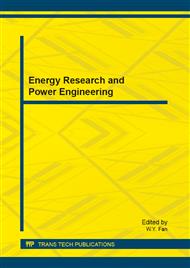p.1210
p.1219
p.1223
p.1229
p.1235
p.1239
p.1245
p.1250
p.1254
Feasibility Study on the Fault Line Selection Method Based on Overall Trend of Zero Sequence Current
Abstract:
Two results were obtained by analysing electromagnetism transition condition: firstly, when the initial phase angle of fault is larger, the characteristic of travelling wave is obvious, and the polarity of the first travelling wave head is consistent with the overall trend of zero sequence current in preliminary stage; secondly, when the initial phase angle of fault is smaller, the characteristic of travelling wave is not obvious, but the fault lines and perfect lines can be recognized through the direction of decaying direct current component in zero sequence current, and the direction of decaying direct current component is consistent with the overall trend of zero sequence current in preliminary stage. Research suggests that it is feasible to make the overall trend of zero sequence current in preliminary stage as characteristic for line selection.
Info:
Periodical:
Pages:
1235-1238
Citation:
Online since:
July 2013
Authors:
Price:
Сopyright:
© 2013 Trans Tech Publications Ltd. All Rights Reserved
Share:
Citation:


